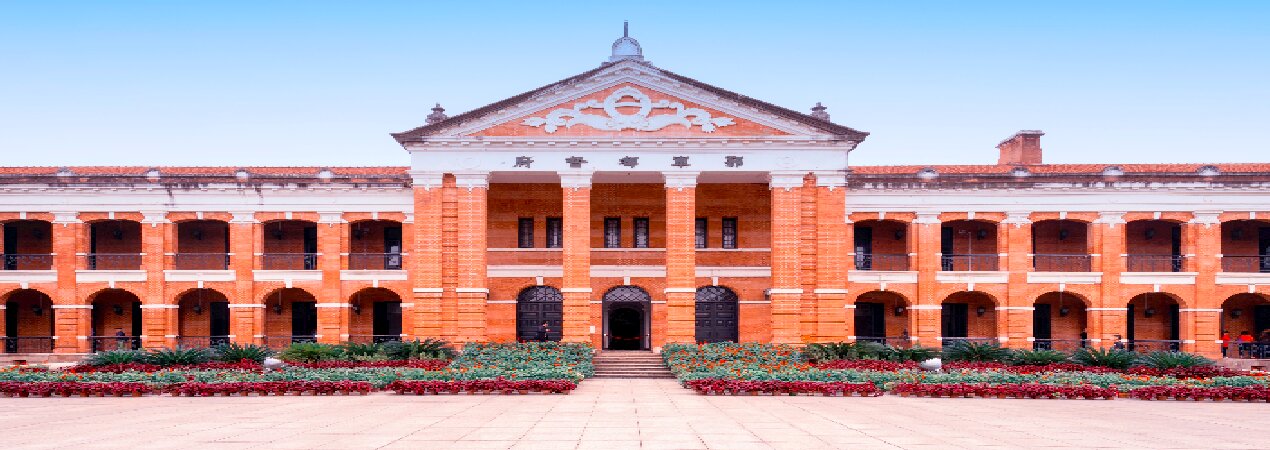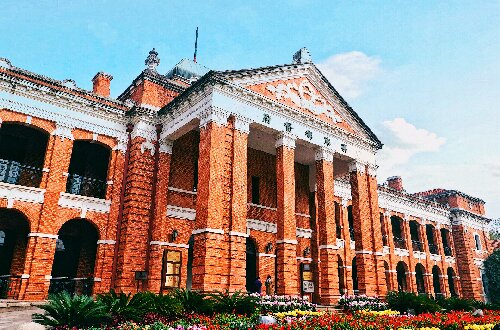The Revolution of 1911 Museum

The Revolution of 1911 Museum is a thematic museum established relying on the former site of the Military Government of the Wuchang Uprising. It was opened to the public in 1981 and has a collection of more than 23,000 items, including historical cultural relics, photos, documents and so on related to the Revolution of 1911. The important collections include the horizontal scroll inscribed with "Fraternity" by Sun Yat-sen for Cao Yabo, the portrait of Martyr Liu Jing'an and so on.
In 1961, the State Council listed this historical building as a major historical and cultural site protected at the national level. In 1981, to commemorate the 70th anniversary of the Revolution of 1911, the Memorial Hall of the Wuchang Uprising of the Revolution of 1911 was established relying on the Military Government of the Wuchang Uprising, and Soong Ching-ling personally inscribed the name of the hall. In 2017, this museum was rated as a national first-class museum. In July 2022, the Memorial Hall of the Wuchang Uprising of the Revolution of 1911 and the Museum of the Revolution of 1911 were merged to form the Museum of the Revolution of 1911.
- Chinese name: 辛亥革命武昌起义纪念馆 Xīnhài Gémìng Wǔchāng Qǐyì Jìniànguǎn
- Suggested time: 1-2 hours
- Ticket: Free (ID required)
- Open hours: 9:00-17:00 (Closed on Mondays)
- The best time to visit: All year round
- Address: No. 1, Shouyi Road, Wuchang District, Wuhan, Hubei, China
- How to get there: Take Metro Line 5 to Shouyi Road Station, then walk for about 5 minutes
Highlights of The Revolution of 1911 Museum
The Military Government of Hubei Province
 The Military Government of Hubei Province
The Military Government of Hubei ProvinceThe main building of the Military Government of Hubei Province is a typical Western-style parliamentary building. It has two floors and a display area of 2,500 square meters, where there is a restored exhibition of the former site of the Military Government of Hubei Province. In the center of the first floor is the conference hall. In 1912, Sun Yat-sen once gave a speech here. On the same floor, there are also offices of departments such as the General Staff Department, the Ministry of Civil Affairs, and the Department of Military Orders. The eastern part of the second floor was originally the living room of Li Yuanhong.
At the very center of the top of the upper floor is a wedge-shaped church-style watchtower, which has a strong style of Western classical architecture. With a broad view, it looks magnificent and grand. Later, because the main body of the former site is a building with red walls and red tiles, the people of Wuhan called it the "Red Building".
Halls and Collection
The former site where the Memorial Hall of the Wuchang Uprising of the Revolution of 1911 is located covers an area of more than 20,000 square meters, with a building area of nearly 10,000 square meters. The currently open areas to the public include the main building of the Military Government of Hubei Province, the east and west auxiliary buildings, and the Councilors' Office. The museum has a collection of more than 23,000 cultural relics related to the Revolution of 1911, which are divided into seven categories: utensils, emblems, stone carvings, calligraphy and paintings, genealogy records, miscellaneous items and certificates. There are 2 basic exhibitions and 1 thematic exhibition.
The Iron and Blood 18-Star Flag
The Iron and Blood 18-Star Flag, briefly known as the 18-Star Flag, is also called the Iron and Blood Flag, the Nine-pointed Flag, the Nine-pointed 18-Star Flag, and the Flag of the First Uprising. It is a symbol of the victory of the Wuchang Uprising. The flag surface is red, symbolizing the spirit of iron and blood. The 18 stars represent the 18 provinces in the Han ethnic areas, thus representing the whole country. Once the flag of the Wuchang Uprising was raised, provinces across the country responded enthusiastically. A nationwide anti-Qing revolutionary movement quickly emerged, ultimately leading to the end of the Qing Dynasty.
The Wuchang Uprising Memorial Hall of the 1911 Revolution is not only of historical significance but also a major site for the public to know about the history of the 1911 Revolution. The memorial hall has been dubbed, "The Gateway to the Republic of China," making it a landmark for the termination of China's feudal monarchy and beginning of China's republican period. Each year, many tourists visit it to commemorate this momentous historic event.
Drop us a line and we'll connect you with the top China expert in no time!